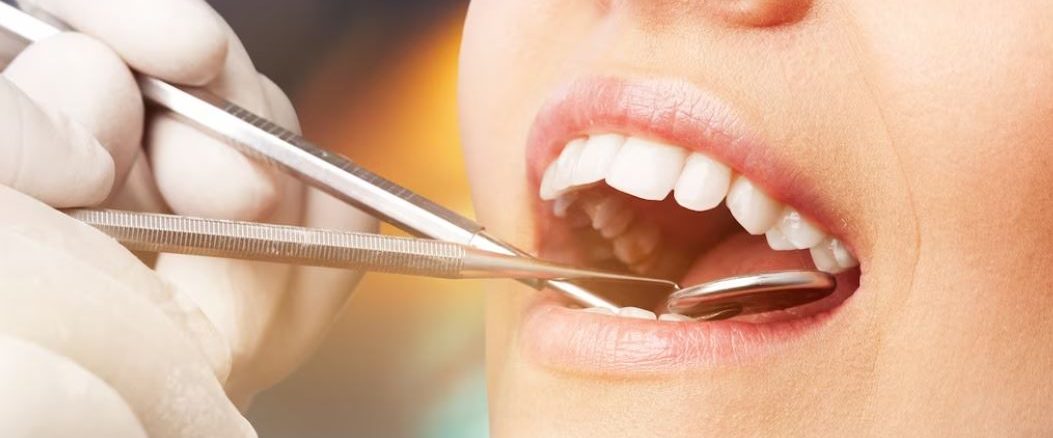
DENTAL TREATMENTS
Gum Treatment
What are Gum Diseases?
Gum disease occurs in several stages. Early stage gum disease is simply known as gingivitis. When gingivitis is left untreated, periodontal ligaments, the connective tissues that anchor teeth to the jawbone, become inflamed. This degree of gum inflammation is called “periodontitis”. Periodontitis is a serious gum problem and needs to be treated without delay. It may be difficult to notice the symptoms of gum disease in the early stages.
What are the symptoms of gum disease?
Symptoms of early stage gum disease include swelling, redness and tenderness of the gums. Bleeding gums may occur after brushing or flossing your teeth. Symptoms of gum disease can be listed as follows:
Red and swollen gums: This is the first sign that there is a problem with the gums. Gum disease typically begins with inflammation along the gum line. Healthy gums appear light pink. If abnormal redness is noticed on the gums, it is necessary to consult a doctor.
Bad breath: There are many bacteria in the mouth under normal conditions. Bacteria feed on plaque accumulated on the tooth surface. When plaques are not cleaned, the number of bacteria in the mouth increases. Bacteria release toxins that can irritate gums and teeth and cause a bad breath. Bad breath can be a symptom of gum disease.
Shrinking gums: If teeth appear longer than before, gum recession may have begun.
Sensitive teeth: Extreme sensitivity of teeth to cold and heat is among the symptoms of gum disease. This symptom usually occurs with gum recession.
GUM RECESSION (PERIODONTITIS)
Periodontitis, also called receding gums or gum disease, is a serious gum infection that damages the soft tissue around the teeth and, if left untreated, can destroy the bone that supports an individual’s teeth. Gum recession (periodontitis) can cause loosening of teeth or tooth loss.
Gum recession (periodontitis) is a common but largely preventable condition. It is usually caused by poor oral cleaning and care. Brushing one’s teeth at least twice a day, using daily dental floss, and having regular dental examinations both reduces the likelihood of developing gum recession (periodontitis) and can greatly increase the chances of successful treatment.
In many cases, the development of gum recession (periodontitis) begins with the formation of plaque, a sticky film consisting primarily of bacteria. If this plaque is left untreated, it can eventually turn into periodontitis.
Plaque forms on teeth when starches and sugars in food interact with bacteria normally found in an individual’s mouth. Brushing teeth twice a day and flossing once a day can remove plaque buildup, but plaque builds back quickly.
Plaque remaining on the teeth can harden below the gum line and turn into tartar, or tartar. Tartar is harder to remove than plaque and is filled with bacteria. The longer plaque and tartar remain on your teeth, the more damage it can do. It is not possible to remove tartar by brushing your teeth and using dental floss. A professional dental cleaning is needed to remove it.
Diseases Caused by Rotten Teeth
Unfortunately, diseases caused by rotten teeth are not something to be taken lightly.
Since our childhood, the warning to “brush your teeth twice a day” comes from many channels. Sometimes we are sensitive about this issue and apply it, sometimes we neglect it. However, it is very important to brush your teeth daily, floss and use mouthwash, because neglected and problematic teeth can cause a disease you cannot even imagine. Diseases mainly caused by decayed teeth;
Neglecting oral care not only leads to tooth decay, but also gum disease or periodontal disease may occur due to plaque in the mouth. This disease occurs in your mouth and also affects organs when bacteria in the mouth are digested with food.
Gum disease has three stages;
In the first stage, called gingivitis, excessive plaque formation on the gums creates inflammation and causes swelling. This problem can be solved by regular tooth brushing and flossing.
In the second and third stages, irreversible damage occurs as the bones and tissues in the mouth are severely affected and the accumulated plaque deforms the teeth. Depending on the severity of the damage, some effects can be reduced with appropriate treatment, otherwise tooth extraction may result.
Through research, scientists have discovered that bacteria entering the body through the mouth can cause vascular occlusion, stroke or heart attack. Bacteria left in the mouth without brushing are digested in the body and mix with the blood. It reaches the heart through the blood and is infected.
What is an Implant?
Implants are screws made of titanium used in the treatment of missing teeth and placed inside the jawbone. A dental prosthesis is placed on these screws. The advantage of implant treatment over other treatments is that neighboring teeth are not damaged. This means that neighboring teeth do not need to be cut. The implant tooth acts as a root and you can eat, talk and laugh just like a natural tooth.
Dental implant surgery also involves a surgical process that replaces tooth roots with metal, screw-like posts and replaces damaged or missing teeth with artificial teeth that closely resemble and function like real teeth. A dental implant can offer a welcome alternative to ill-fitting dentures or bridges and is therefore preferred over methods such as traditional bridges.
HOW IS IMPLANT TREATMENT DONE?
Implant treatment is performed by giving the patient a light sedation. A detailed examination and x-ray are required before the procedure. Measurements of the jaw bones and remaining teeth are taken. There are two options for placing dental implants. In the one-stage procedure, a temporary headgear is attached after the implant is placed. In the two-stage process, after the dental implant is inserted, it is covered with gum and left to heal. Prosthetic heads are then attached. In both cases, a temporary bridge is placed and a healing period of 3 months for the lower jaw and six months for the upper jaw is expected. Sometimes newly made teeth can be placed on dental implants immediately. With a dental implant, the patient can laugh and eat safely.
Zirconium implants are new generation implants made to increase the resistance of titanium implants. It is used to increase durability, especially in narrow jawbones. It is no different from titanium except for durability.
Zirconium is also used in dental coatings.
is used. Zirconium is as white as natural teeth and reflects light. Therefore, it is not only durable but also aesthetically useful. It does not corrode and does not leave a metal taste in the mouth. Color change does not occur over time. It does not harm the body.
SAME DAY – IMPLANT TOOTH IN 1 DAY (IMMEDIATE IMPLANT)
In the past, it was necessary to wait 3 months for bone healing after implant applications in the lower jaw and 6 months in the upper jaw. This period was too long for patients, and clinicians began working to shorten this period. In recent years, these studies have begun to bear fruit.
In the immediate loading protocol, which is a new method, teeth can be installed on the same day as tooth extraction.
The experience and skill of the physician affect the result. Synchronized work of the Maxillofacial Surgeon and Prosthodontist is the golden key to the success of “Same Day Implant Teeth”.
AESTHETIC DENTISTRY
Tooth Whitening
Teeth whitening is one of the simplest approaches that can be applied for a more aesthetic and warm expression. If the shape of your teeth and their harmony with your lips are ideal but their color is dark, the color of your natural teeth can be lightened in a short time by using suitable medications. Whitening is a procedure that does not harm your teeth when done under the supervision of a dentist by choosing the right medications.
Home Whitening: A special whitening plate is prepared for the patient by the dentist. By applying whitening drugs to the teeth with this plate, the color of the teeth can be lightened by 2-3 shades.
Office Whitening: This professional system, applied in 2-3 sessions in the patient chair with strong light sources or self-acting medications within half an hour, gives you whiter teeth. The system, whose reliability has been proven by clinical research conducted in America, does not harm tooth enamel and fillings.
Whitening in Teeth That Have Received Root Canal Treatment: Teeth that have undergone root canal treatment begin to darken after a while. The necessary medications are placed inside the tooth and the tooth is closed with a temporary filling. It can be checked at intervals of 2-3 days and repeated for several sessions until the color of the tooth becomes the same color as other teeth. Once the desired color is achieved, the treatment is completed by applying a permanent filling to the tooth.
WHAT IS SMILE DESIGN? WHAT ARE THE PROCEDURES?
When it comes to aesthetic dentistry, one of the first concepts that comes to mind is “smile design”. Smile design; It is the process of restoring the teeth and gums, which are not aesthetically visible due to various reasons, to a natural and beautiful appearance as much as possible, taking into account the facial shapes and needs of the patients. Smile design, which is a multidisciplinary approach. It is carried out by applying many operations together.
HOW TO DESIGN A SMILE?
In smile design, it is very important to first understand the aesthetic expectations of the patient and determine the needs correctly. Problems are identified and plans are made on models prepared using measurements taken from the patient’s mouth. Then, measurements are made using special programs on the computer with the patients’ oral and facial photographs, and the adaptation to the face shape is calculated. The most approximate images that will occur after the treatment are presented to the patient with programs and temporary restorations prepared in accordance with the patient’s mouth, and their opinions are taken.
After the planning is completed, if orthodontic treatment is not required, first the level disorders in the gums are corrected. In cases where there are missing teeth, planned implant procedures and other surgical procedures deemed necessary are performed. After the healing periods of surgical procedures are completed, teeth whitening procedures are applied if necessary. After this stage, visual and formal defects in the teeth are sometimes corrected through aesthetic composite fillings. In cases where this method is not sufficient, porcelain laminates and veneers and zirconium veneers come into play. For porcelain laminate applications, generally either no or minimal abrasion is performed on the teeth. If porcelain or zirconium applications are deemed appropriate, some changes can be made by taking the patient’s opinions during the rehearsals during the stages. During all these gum and dental applications and rehearsals, the lip shape and contour are taken into consideration and the targeted design is finalized.
Sometimes, medical aesthetic applications are also used during smile design. Dermal fillers etc. applied to the lips and face areas. Smile can be brought to the fore with applications.
LAMINATED PORCELAIN COATING
Lamina porcelain veneers, also known as leaf porcelain, are porcelain tooth designs that eliminate aesthetic appearance concerns, are specially prepared according to the breakage and deformation of the teeth, and are glued to the front surfaces of the teeth. Laminate dental coating, which is applied without any abrasion on the teeth, is a thin, semi-permeable layer that provides perfect fit and sensitivity. Porcelain laminates, which resemble teeth in appearance, have a thin structure but are very durable and do not break easily. Lost tooth tissues are regained with laminate porcelain veneer, which is preferred as it is the method that causes the least loss of healthy tooth tissue.
WHY SHOULD LAMINA PORCELAIN FROSTING BE MADE?
Depending on age and oral care, teeth may lose their color and durability. Teeth that weaken over time can wear out and break. In these cases, lost teeth can be regained with the help of aesthetic dentistry. At the same time, people who are concerned about aesthetics may want their teeth to have a pleasing form. Again, at this stage, laminate dental coating or full ceramic coating options may be helpful. To correct deformities, correct slightly crooked teeth, eliminate color incompatibilities, align front teeth and eliminate other aesthetic and functional disorders if It can cause a dangerous infection known as endocarditis.
Pneumonia is among the diseases caused by rotten teeth. Bacteria entering the body from the mouth or other places cause lung infection that reaches the lungs. Pneumonia is extremely dangerous, especially for older patients.
1,400
Happy Patients
65
Qualified Doctors
160
Clinic Rooms
2
Hospital Partners

